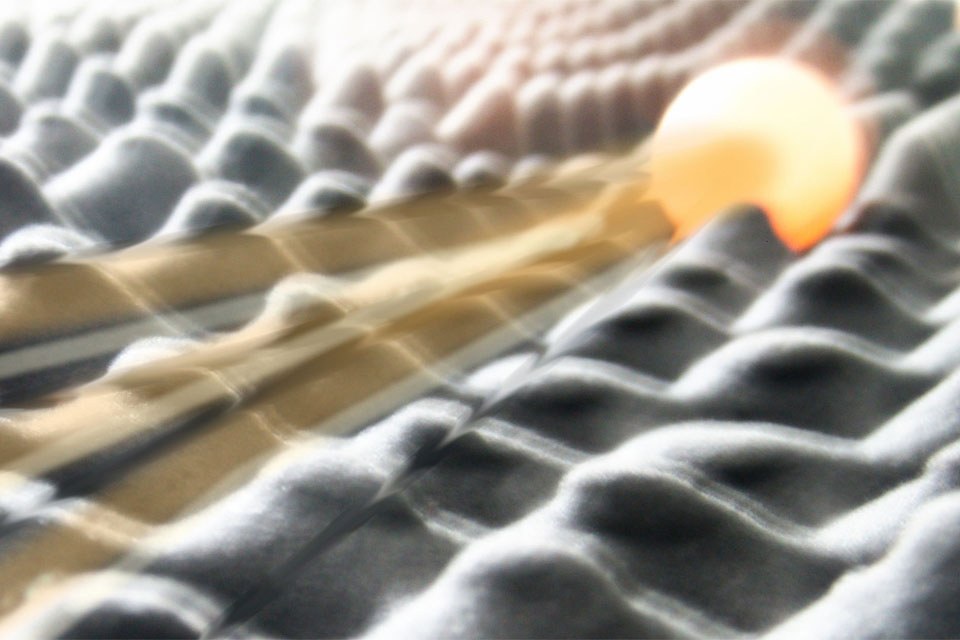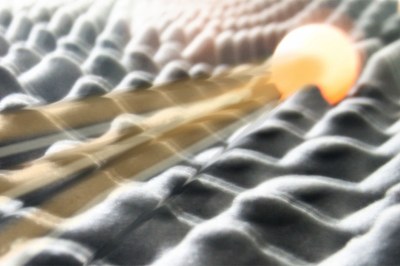Researchers Study How to Avoid Charge Traps in Plastic Electronics
Plastic electronics hold the promise of cheap, mass-produced devices. But plastic semiconductors have an important flaw: the electronic current is influenced by “charge traps” in the material. These traps, which have a negative impact on plastic light-emitting diodes and solar cells, are poorly understood.
However, a new study by a team of researchers from the University of Groningen and the Georgia Institute of Technology reveals a common mechanism underlying these traps and provides a theoretical framework to design trap-free plastic electronics. The results are presented in an advance online publication of the journal Nature Materials.
Plastic semiconductors are made from organic, carbon-based polymers, comprising a tunable forbidden energy gap. In a plastic light-emitting diode (LED), an electron current is injected into a higher molecular orbital, situated just above the energy gap. After injection, the electrons move toward the middle of the LED and fall down in energy across the forbidden energy gap, converting the energy loss into photons. As a result, an electrical current is converted into visible light.
However, during their passage through the semiconductor, a lot of electrons get stuck in traps in the material and can no longer be converted into light. In addition, this trapping process greatly reduces the electron current and moves the location where electrons are converted into photons away from the center of the device.
“This reduces the amount of light the diode can produce,” explained Herman Nicolai, first author of the Nature Materials paper.
The traps are poorly understood, and it has been suggested that they are caused by kinks in the polymer chains or impurities in the material.
“We’ve set out to solve this puzzle by comparing the properties of these traps in nine different polymers,” Nicolai explained. “The comparison revealed that the traps in all materials had a very similar energy level.”
The Georgia Tech group, led by Professor Jean-Luc Bredas in the School of Chemistry and Biochemistry, investigated computationally the electronic structure of a wide range of possible traps. “What we found out from the calculations is that the energy level of the traps measured experimentally matches that produced by a water-oxygen complex,” said Bredas.
Nicolai explains that “such a complex could easily be introduced during the manufacturing of the semiconductor material, even if this is done under controlled conditions.” The devices Nicolai studied were fabricated in a nitrogen atmosphere, “but this cannot prevent contamination with minute quantities of oxygen and water,” he noted.
The fact that the traps have a similar energy level means that it is now possible to estimate the expected electron current in different plastic materials. And it also points the way to trap-free materials. “The trap energy lies in the forbidden energy gap,” Nicolai explained.
This energy gap represents the difference in energy of the outer shell in which the electrons circle in their ground state and the higher orbital to which they can be moved to become mobile charge carriers. When such a mobile electron runs into a trap that is within the energy gap it will fall in, because the trap has a lower energy level.
“But if chemists could design semiconducting polymers in which the trap energy is above that of the higher orbital in which the electrons move through the material, they couldn’t fall in,” he suggested. “In this case, the energy level of the trap would be higher than that of the electron.”
The results of this study are therefore important for both plastic LEDs and plastic solar cells. “In both cases, the electron current should not be hindered by charge trapping. With our results, more efficient designs can be made,” Nicolai concluded.
The experimental work for this study was done in the Zernike Institute of Advanced Materials (ZIAM) at the faculty of Mathematics and Natural Sciences, University of Groningen, the Netherlands. The theoretical work to identify the nature of the trap was carried out at the School of Chemistry and Biochemistry and Center for Organic Photonics and Electronics at the Georgia Institute of Technology, Atlanta, USA .
The work at the University of Groningen was supported by the European Commission under contract FP7-13708 (AEVIOM). The work at Georgia Tech was supported by the MRSEC program of the National Science Foundation under award number DMR-0819885.
Citation: H. T. Nicolai1, M. Kuik1, G. A. H.Wetzelaer1, B. de Boer1, C. Campbell2, C. Risko2, J. L. Brédas2,4 and P.W. M. Blom1,3* Unification of trap-limited electron transport in semiconducting polymers. Nature Materials, published online: 29 July 2012 | DOI: 10.1038/NMAT3384


